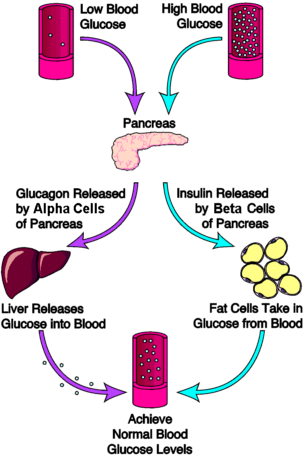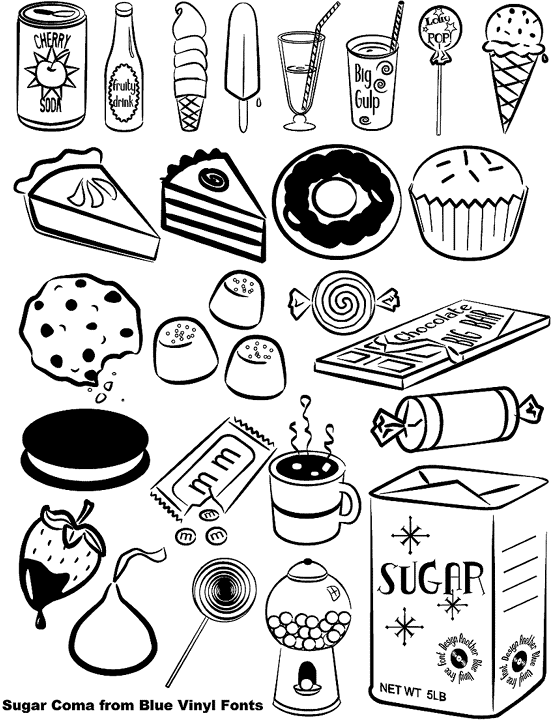
 BY ELIZABETH FIEND LIVING EDITOR The Glycemic Index could save your life — literally. It could make living with diabetes easier. Or prevent diabetes in the first place. It can reduce your risk of heart disease. It will lower your cholesterol. It will make you thinner. It might even get you laid. The Glycemic Index is a scientific measurement of how rapidly foods release their sugars into your blood. It’s an invaluable, easy-to-use tool for maintaining or getting to a proper weight. Forget diets. Get jiggy wit’ the GI instead.
BY ELIZABETH FIEND LIVING EDITOR The Glycemic Index could save your life — literally. It could make living with diabetes easier. Or prevent diabetes in the first place. It can reduce your risk of heart disease. It will lower your cholesterol. It will make you thinner. It might even get you laid. The Glycemic Index is a scientific measurement of how rapidly foods release their sugars into your blood. It’s an invaluable, easy-to-use tool for maintaining or getting to a proper weight. Forget diets. Get jiggy wit’ the GI instead.
Research on the Glycemic Index originally began as a way to pin-point the best foods choices for diabetics; to help them better control their blood sugar and therefore insulin production. But soon it became apparent that the Glycemic Index was a great tool for people to use to control their weight.
The concept was popularized in diets like Atkins, The Zone and The South Beach Diet which center around the philosophy of low-carb/high protein. The problem with these diets is that they rely on too much protein and not enough fruits and vegetables to keep you healthy in the long run.
the long run.
Carbohydrates are found in foods like bread, pasta, cake and fruit as these foods contain sugars. Foods that are low in carbs are fish, meat, cheese; these foods contain fat and protein.
The Glycemic Index was built by sitting down 10 people and measuring their blood sugar after feeding them a specific food — and then measuring their blood sugar again two hours later. Days later, the process was repeated and the numbers were combined and averaged. So yeah, they made a list checked it twice, and found out which foods were naughty or nice.
THE SCIENCE OF IT
The basic building block of a carbohydrate is a sugar molecule composed of carbon, oxygen and hydrogen. Starches (another word for carbohydrates) are basically chains of sugar molecules, some containing only one sugar, others hundreds of sugars.
To digest these sugars, our body has to break them down into a simple sugar molecule of glucose, aka blood sugar, so they’ll be tiny enough to enter our bloodstream. As our blood sugar rises after eating, cells in the pancreas produce more and more of the hormone insulin which tell our cells to absorb the sugar. Our cells act like a sponge and soak up the sugar. But if too much sugar is released into our blood all at once, our bodies are overwhelmed and the “sponge” can’t sop-up the sugar fast enough. This is a problem for diabetics whose insulin system isn’t working properly. But it’s become clear that this is a problem for non-diabetics, as well.
When you eat a candy bar, you are essentially pouring spoonfuls of sugar into your bloodstream. You spike, suddenly you got energy up the wazoo! And then, just as suddenly, you crash and burn, losing energy and feeling hungry again, even though you just consumed  a zillion calories an hour ago. You eat more, you get fat and grumpy and soon you have no girlfriend. Time to turn to the GI. If you use the Glycemic Index to help you make food choices you’ll feel fuller longer because your blood sugar will stay relatively stable before eating, after eating and in-between meals — and this will help you to eat less. When you eat less, you weigh less.
a zillion calories an hour ago. You eat more, you get fat and grumpy and soon you have no girlfriend. Time to turn to the GI. If you use the Glycemic Index to help you make food choices you’ll feel fuller longer because your blood sugar will stay relatively stable before eating, after eating and in-between meals — and this will help you to eat less. When you eat less, you weigh less.
Carbohydrates are the fuel for our bodies, they’re necessary for our survival. They charge us up so we can be physically active and have proper organ function. But in recent years our diets have been skewed by excessive carbohydrates added to processed foods. One of the biggest offenders is high fructose corn syrup.
Before GI, the world was divided into simple carbohydrates such as white rice, white bread and white potatoes, which are made up of single sugars like fructose, sucrose, dextrose and glucose and complex carbohydrates, such as brown rice, whole wheat bread and yams, which are made up of three or more linked sugars. Then along came the Glycemic Index which offers us much more detailed information. The Glycemic Index lays out the findings in a convenient list format ordered by how quickly a foods’ glucose is released into your body after you eat it.
To eat healthy, eat low on the list. White bread is at 100 and the list works down from there. Foods ranked at 55 or lower are considered “low.” To start out, eat at least one food that’s 55 or lower at each meal. Throw in a serving or two of something over 55 but less than 70. You’ll lose weight and be more nourished. Foods ranked over 70? Danger, danger, Will Robinson!
Remember, a serving is a very specifically defined portion, not how much you can eat at one sitting, rather the amount you should eat at each meal. Take a sandwich for example — that’s two servings of bread — each piece of bread is one serving. So remember when eating a sandwich you’re getting two servings of carbohydrates just from the bread alone.
Serving sizes are conveniently detailed on every single package of food. It’s the law. Read the label, ok? Package says three servings, you eat one third of the package, not the whole thing, duh. Some packages try to trick you into thinking one package = one serving (especially beverages). Not true. Read the label. Do the math.
For items that aren’t prepackaged, like fish and meat, a serving is the size of a deck of cards. For fruits a serving is one cup or about one medium fruit. For vegetables a serving is half a cup of chopped vegetables or one cup of leafy greens. Don’t lie to yourself. Get a measuring cup. Use it until you’re familiar with what a true serving size is.
The best way to use the list is the “this or that” method. Pick a food category and take a look at all the items listed. Fill up on foods you already like to eat that have low GI numbers. Or, just take a look at the list, look at all the foods 55 or lower, which ones do you like? Eat them. For example vegetables: corn = 60; peas = 54; raw carrots = 16. OK, you don’t care. How about this: angel food cake = 67; pound cake = 54; sponge cake = 46. Knowing these numbers can help you plan a meal.
THE DOWNSIDE
The Glycemic Index only measures carbohydrate absorption in the blood, it doesn’t take any other nutritional values into consideration. Therefore you’ll see that the GI of French fries is lower than that of a baked potato. But this is not license to eat tons of French fries. Why? Because French fries contain a load of fat, probably the unhealthiest fat of all, trans fat. You must still use common sense when consulting the GI.
Fat is not all bad. In fact we need some to survive and eating some fat can be “worked” to actually help you lose weight because fat slows the rate your stomach empties out after you eat (that’s why fried potatoes are lower on the list than baked potatoes). Include small to moderate amounts of “good” fats like monounsaturated and polyunsaturated fat with each meal and you’ll feel full for a long time. If you don’t know which foods contain which types of fat it’s listed on the package label. Read it. Or ask me in a comment on this blog. You can also check out my previous column on fat.
The GI is full of surprises. It seemed to be a no brainer that pasta, would have a high (bad) ranking like white bread. However this turned out to be wrong. Pasta has a mid level rating. Seems the physical entrapment of ungelatinised granules of starch form a sponge-like network of gluten molecules (gluten is the protein component of wheat) making pasta a very unique food in terms of it’s Glycemic rating. That’s why we LOVE the Glycemic Index — it really dishes the dirt.
Pasta should be eaten for sure, but in moderation. A meal comprised of a few cups of vegetables and ONE serving of pasta is a fine healthy meal. Switch this ratio, two cups of pasta and one cup of vegetables and your diet goes down the tubes. The GI also found out for us that overcooking pasta raises it’s GI. So, al dente it is. And choose whole wheat pasta because it contains more minerals, vitamins and antioxidants than white pasta.
pasta and one cup of vegetables and your diet goes down the tubes. The GI also found out for us that overcooking pasta raises it’s GI. So, al dente it is. And choose whole wheat pasta because it contains more minerals, vitamins and antioxidants than white pasta.
The studying of a foods GI is so sophisticated and extensive that research also found that the best way to eat the dreaded high carb white potato is, ready? ….. Day old, chilled potato salad made with a vinaigrette. Freaky huh?
Cold increases the potato’s resistant starch content and the vinaigrette makes your tummy more acidic slowing down digestion. Lime and lemon juice will do the same thing to other foods.
I didn’t want to tell you this, but there’s another list. It’s called the Glycemic Load. It’s newer and is based on an even more complicated equation. It also uses a whole different numbering system. I say skip this list for now, it’s very helpful for scientific research but just too complicated to use for meal planning. If you’re some brainiac-dieter and you want to search out foods on the GL list, eat ones that score 10 or lower.
Here are links to two web pages that contain the Glycemic Index. These links contain the same list and ultimately the same information but present it in different formats. Go there right now. Bookmark then. Refer to them often.
Glycemic Index via a search engine (click on: GI Database, left hand column). http://www.glycemicindex.com/
You can search by a specific food category like “nuts,” a specific food like “cashew,” or by a specific number on the Index, even using the “<” symbol to come up with a list of all tested foods under 55.
Glycemic Index in list form (you have to scroll down the page to get to the list). http://www.mendosa.com/gilists.htm
This list includes foods in their natural state and packaged, processed food by brand name. The list is ordered by food categories and unfortunately starts out with “baked goods” with “vegetables” all the way at the bottom. The alphabet can really mess with your head at times. Ethnic foods are for some reason separated out and listed at the end.
This is a huge, huge, intimidating list because it includes all the foods tested for their GI and GL and you have to just keep scrolling down, and down until you find what you’re looking for. But I have confidence you can handle it.
The list shows the Glycemic Index in the first column (aim for 55 or below, ignore the crazy delimiter symbol). The Glycemic Load is in the last column (aim for 10 or below).
You will notice, the Australians are all over this GI thing and some of the food brands are unfamiliar to us, just ignore.
Some meal ideas that are low on the Glycemic Index: Serve Chili over a bed of lettuce instead of eating with chips or rice; switch to open face sandwiches whenever you can; try my recipe below.
Popeye’s Nutty Portabella Mushroom Burger
by Elizabeth Fiend
Quick and Easy, 1 Dish Meal, Low Carb, Vegan
Serves 2 Human Beings or 8 Martians
Ingredients:
2 large portabella mushrooms
1/2 onion
4 cloves garlic
1/4 teaspoon cayenne pepper
1 teaspoon sesame seed oil
1/4 cup white wine (or white grape juice or water)
1/2 cup water (divided in to 2 parts)
2 cups fresh spinach (packed)
2 teaspoons white miso
2 tablespoons pine nuts
2 small whole grain rolls/buns (like a dinner roll)
Method:
Wash mushrooms and break off stems
Chop stems finely
Dice onion
Mince garlic
Heat sesame oil in saute pan
Add onion, mushroom stems and garlic
Cook 3 minutes, or until onion is tender
In a cup, mix the wine, 1/4 cup water and cayenne pepper.
When the pan becomes dry, add this mixture as needed.
By not adding more oil you save on calories and fat!
Push onion and mushroom stems to the edges of the pan
Add mushroom caps
Saute for 10 minutes (add more wine mixture when too dry)
Turn mushrooms over and saute for 8 minutes (add remaining wine mixture)
Start toasting the rolls/buns
Add spinach to saute pan
Dissolve (stir) miso into 1/4 cup water and add to pan
(Don’t bring miso to a boil as it will loose it’s nutritional value)
Stir for 1 minute or until spinach is evenly wilted (pan should be fairly dry by now)
Mix in pine nuts
Put mushroom cap on toasted roll and top with vegetable / nut mixture
Sources and For More Information:
Everything you always wanted to know about the GI but were afraid to ask:
http://www.mendosa.com/gilists.htm
Harvard School of Public Health; carbohydrates; whole grains; the GI:
http://www.hsph.harvard.edu/nutritionsource/carbohydrates.html
How to read a food label and understand serving sizes:
http://www.herbalconsultant.com/Food_Labels.htm
ABOUT THIS COLUMN: At no time in recorded history have we possessed so much knowledge about health and nutrition, nor have we ever had such vast and effective machinery for disseminating that knowledge — and yet, for all intents and purposes, we live in hi-tech Dark Age with the vast majority of the global population essentially ignorant or confused about the basic facts of their own biology. How did this happen? Well, that’s a whole six-part mini-series in and of itself, but the short answer is that the bottom line of many a multi-national corporation is dependent on that ignorance, and vast sums of money are expended to maintain it. The global warming argument is a classic example. When scientific fact did not favor Big Oil, they hired their own scientists to to conduct and publish studies that contradicted the peer-reviewed facts about the environmental impact of carbon-based emissions. As a result, whenever the latest global warming news is relayed to the public, it always comes with the caveat that “some dispute these findings.” There was time when newspapers saw it as their duty to truth squad these debates, but that’s long since become a luxury most papers can no longer afford — better to hire another gossip columnist and give the people what they want. To fill this crucial gap, Phawker began publishing the JUNK SCIENCE column by Elizabeth Fiend, beloved host of Big Tea Party. Every week, Miss Fiend connects the dots to reveal a constellation of scientific facts that have been hiding in plain sight — scattered across the vast, cold reaches of the Internet. With a background in punk rock and underground comics, and longstanding employment as a library researcher, Miss Fiend doesn’t pretend to be a scientist or an expert. She does, however, know how scientific facts become diluted by corporate-sponsored non-facts, and every week she separates the smoke from the mirrors. Why? Because she loves you.
